All across Asia, streets and in particular footways, that are typically the domain of pedestrians in Western urban spaces, are used for a huge variety of activities that sustain and maintain the life blood of a city and street.
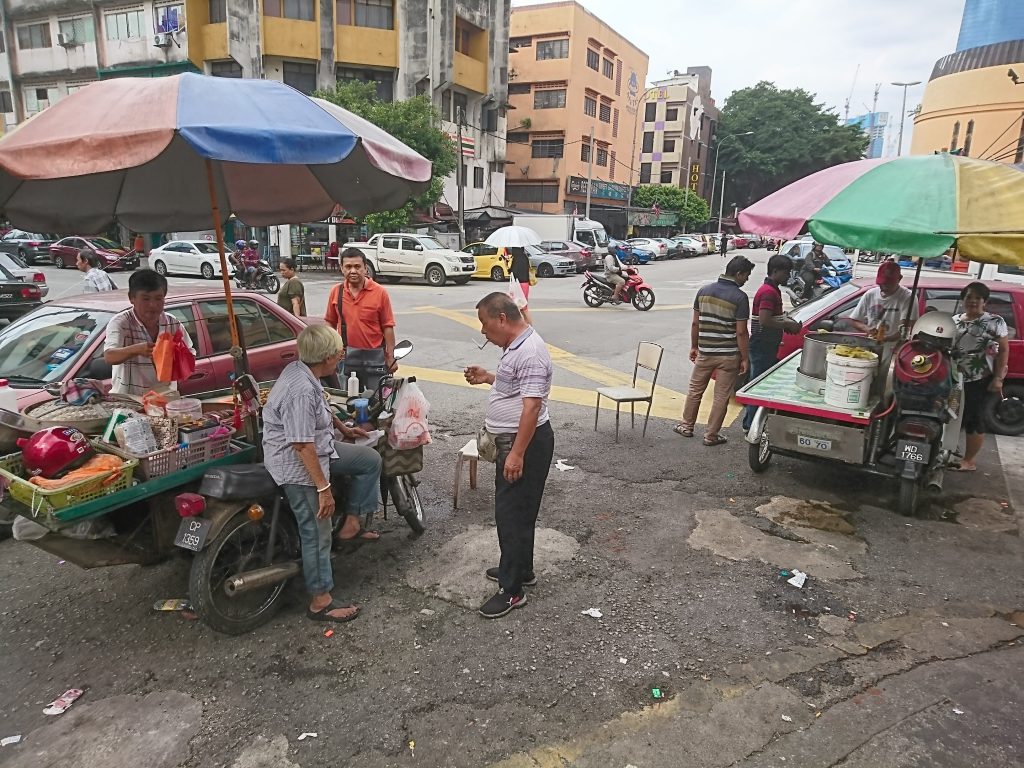
Whether that’s social space for gathering and meeting; economic spaces – where local businesses ply their service or sell their item; growing spaces – where local communities plant food and flowers; places for communities to come together, sit and children to play; and utility spaces – places to store materials, park bicycles, motorbikes or even cars.
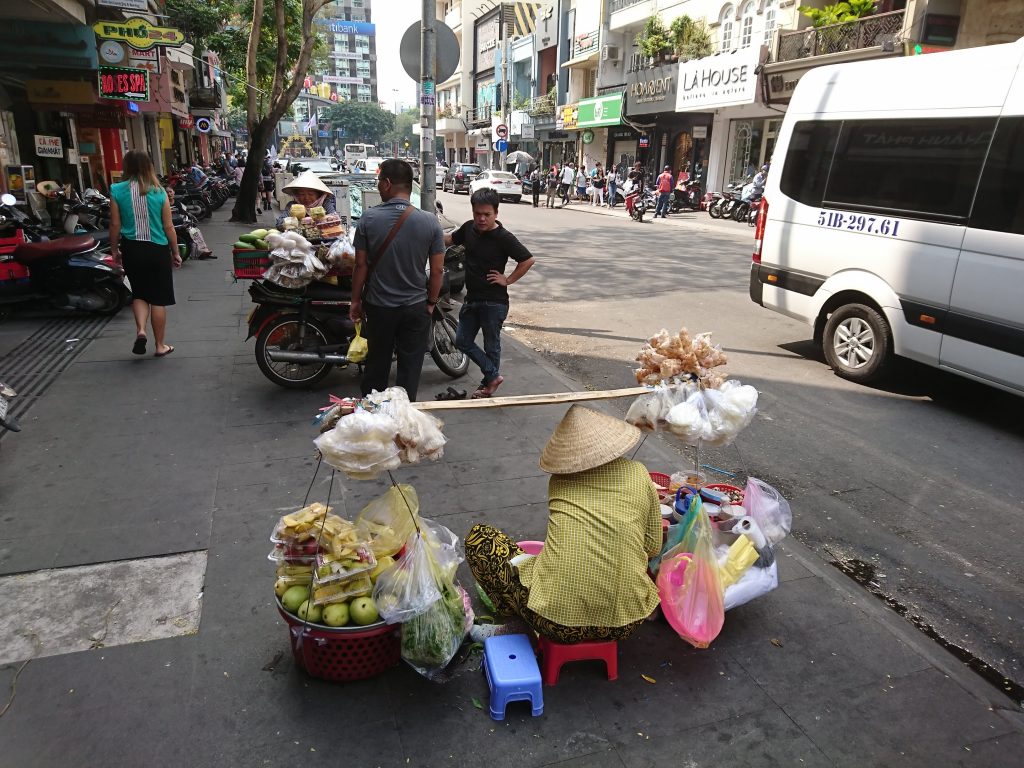
Given that motorbikes are often the lifeblood of Asian cities, with often a lack of affordable and reliable public transport (PT). Whilst PT systems are improved – by introducing BRT and MRT systems – improving walking environments should be done with care to also provide for onward journeys by motorbike and protecting their space on the road in relation to cars.
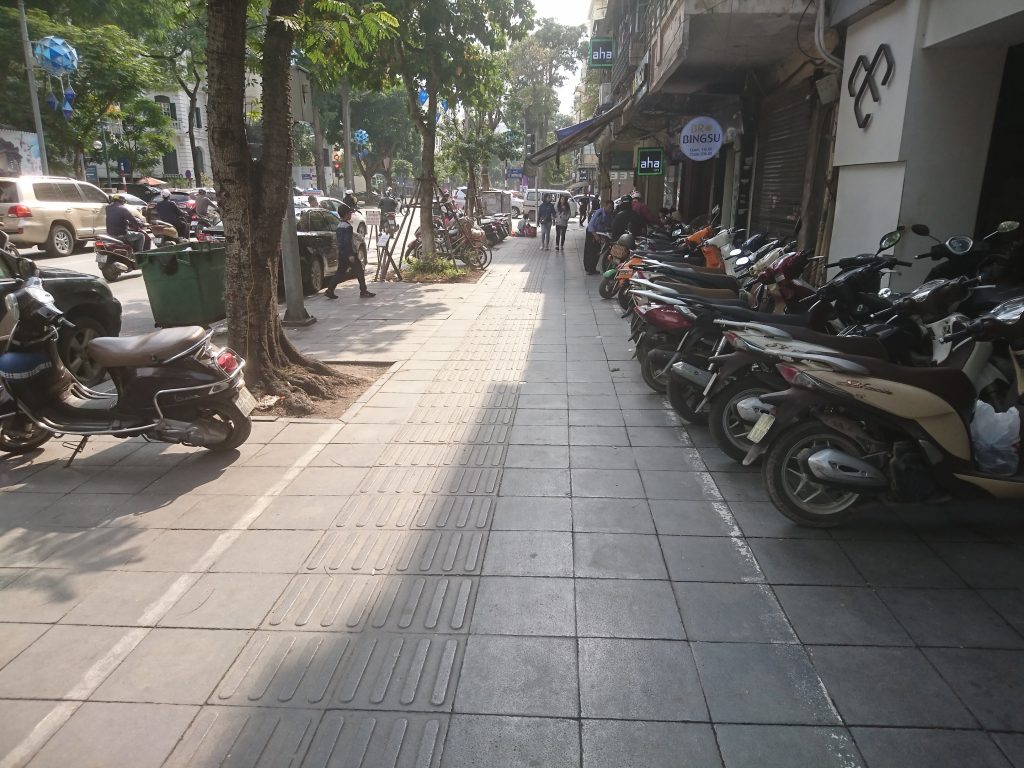
Best practice from SE Asia
Here are some good examples of cities in South East Asia where efforts have already been made to improve, protect and prioritise the pedestrian environment at the same time as other functions:
- Singapore’s – designated cycle parking areas and enforcement to ensure compliance
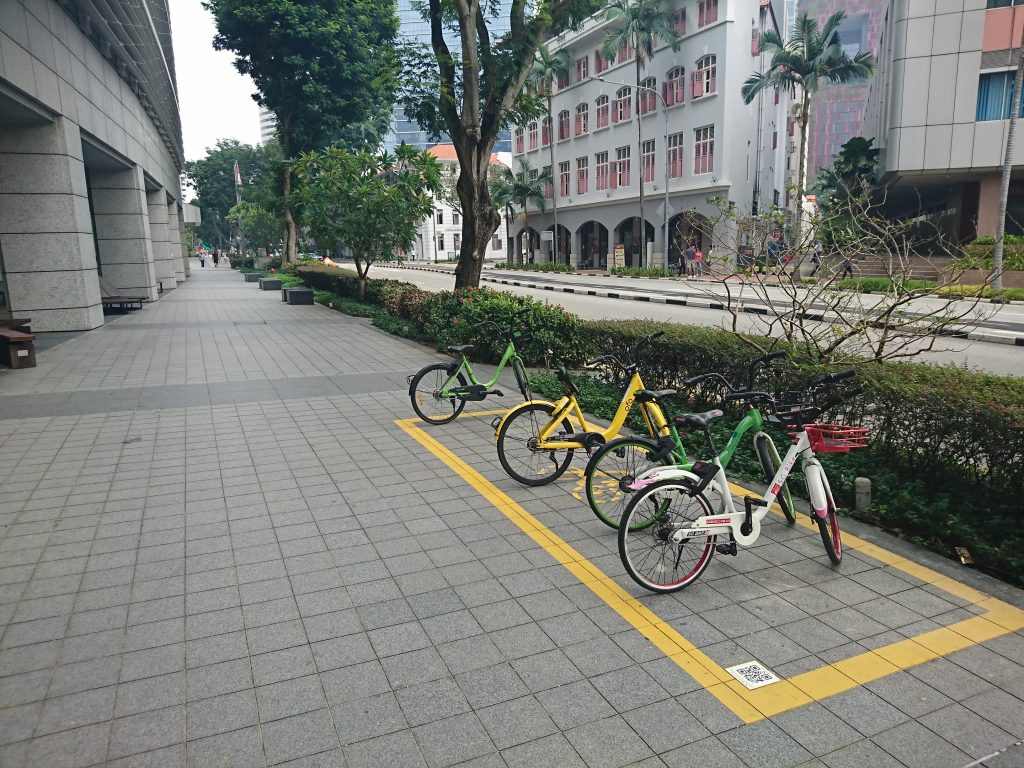
- Hanoi’s (Vietnam) – designated motorbike parking spaces on streets where there is enough space to also protect pedestrians
- Thailand’s temporary walking market streets in cities across the country create space for local business
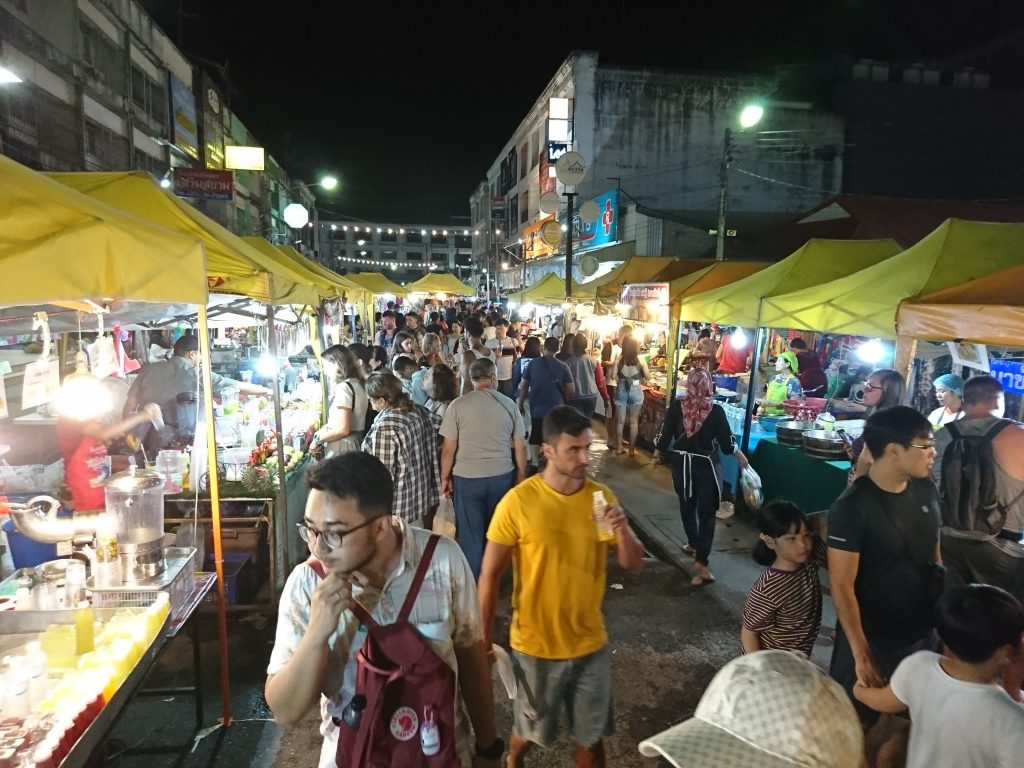
- Hanoi’s (Vietnam) permanent and temporary pedestrian spaces that create space for community games and places for children to play
- Ho Chi Minh’s (Vietnam) Book Street – providing a dedicated space to read, for literary events and walk free of vehicles
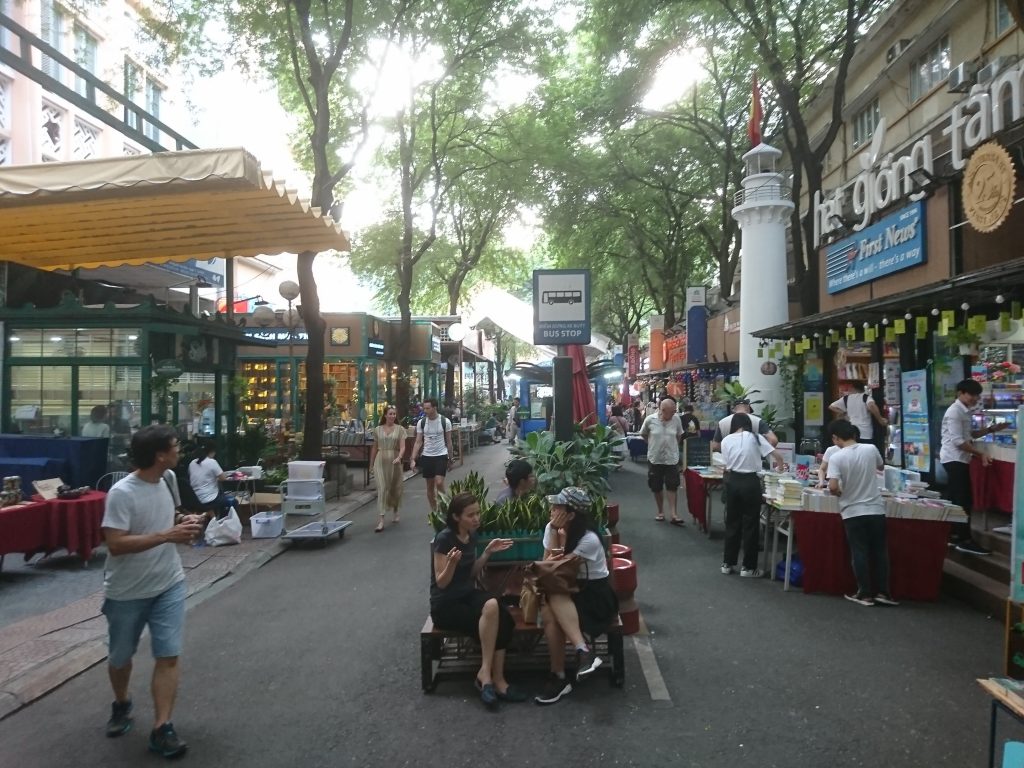
- Hoi an’s (Vietnam) touristic & historical centre has an extremely popular daily walking and cycling zone
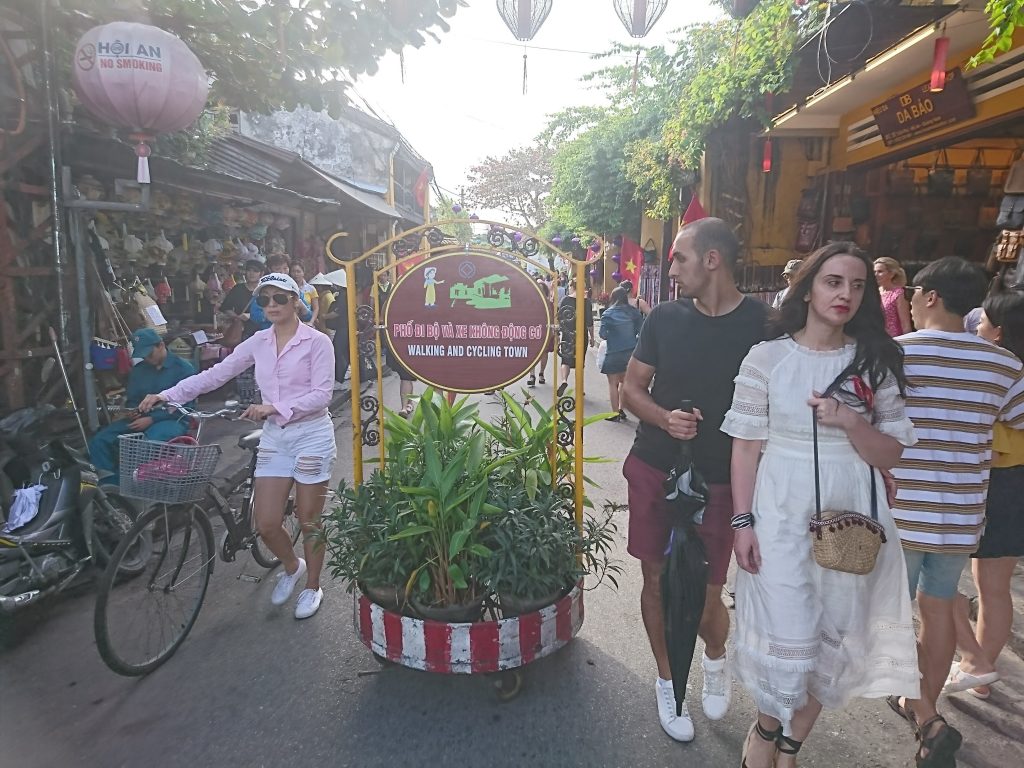
- Jakarta’s (Indonesia) urban villages and dedicating space to people in residential area through delineation of space and modal filtering
- Vietnam’s not exactly pedestrian friendly, but effective and necessary modal filter bars for motorbikes on footways
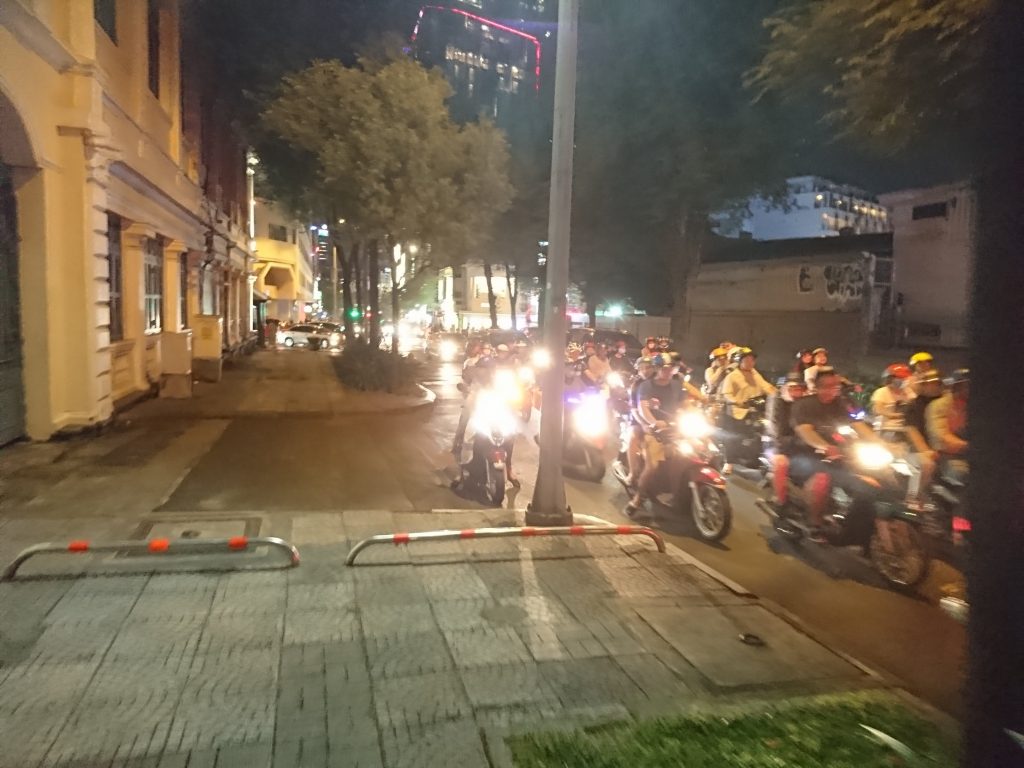
- Kuala Lumpur’s (Malaysia) addition of urban green space to the River of Life creating shade and shelter on the river front
- Malang’s (Indonesia) weekly walking street in a residential area; with live music and events
- Luang Prabang’s (Laos) historical centre creates one of the most walkable of Asian cities due to small alleys and quiet roads due to bans on large vehicles
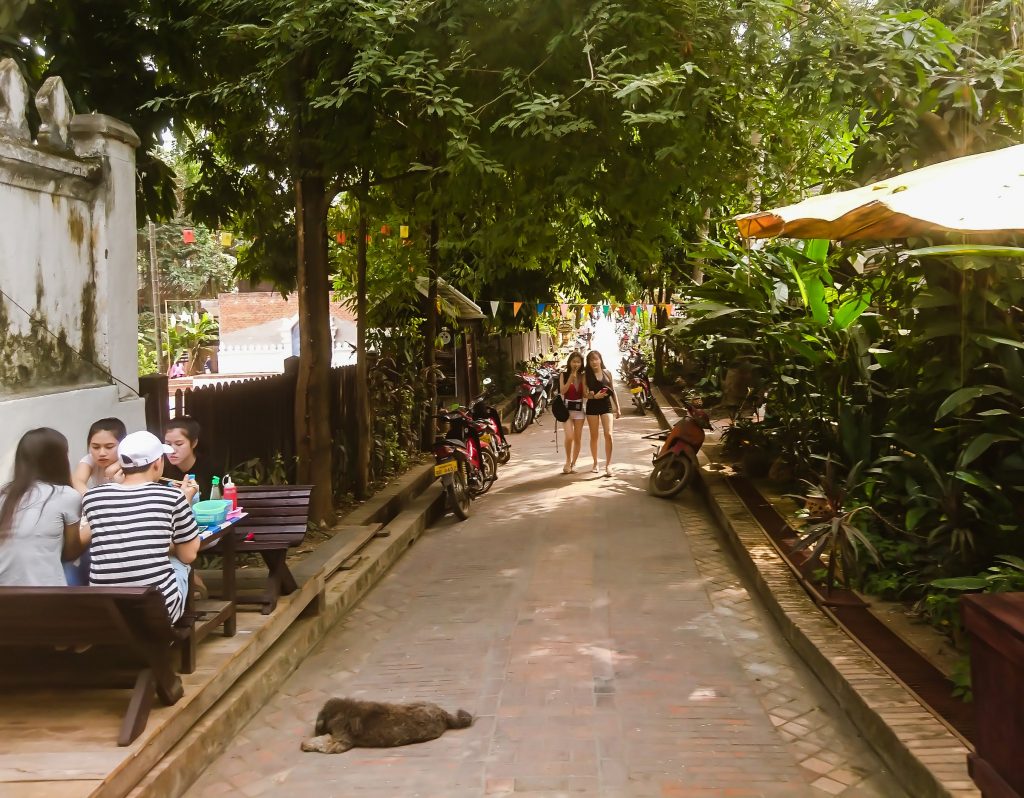
- Cambodia’s Street weddings – utilising temporary closures of roads to host weddings using giant marquees.
- Vientiane’s (Laso) pedestrian corridor and temporary street closures on weekends in its heritage conservation centre.
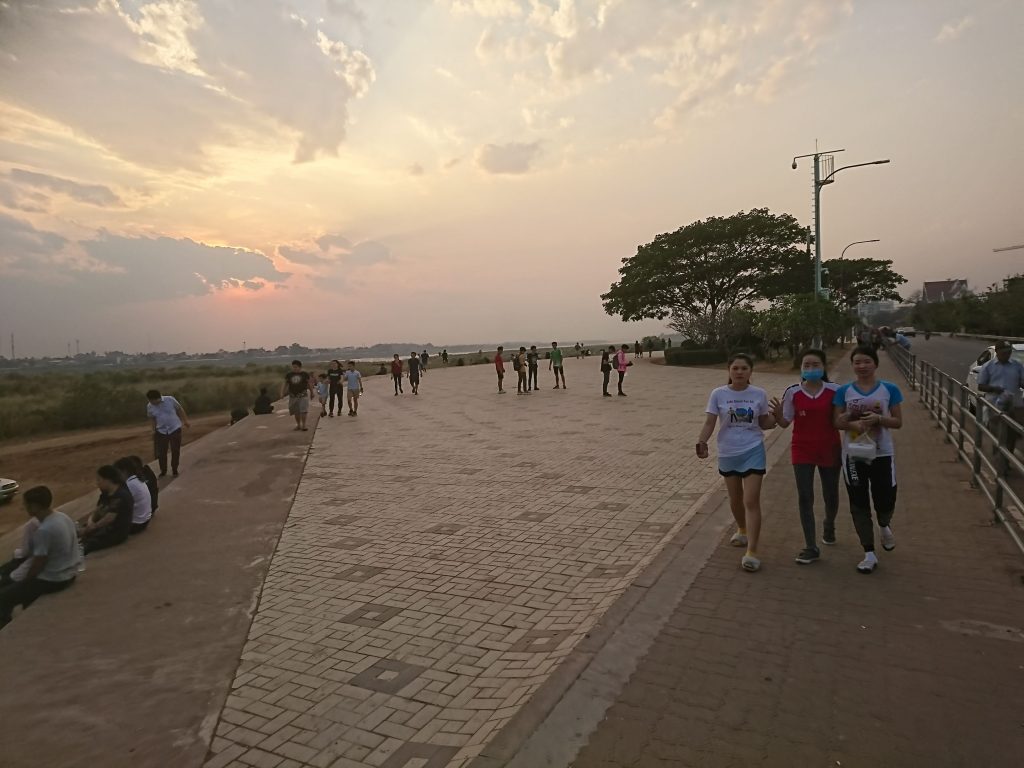
- Bangkok’s (Thailand) enforcement of pedestrian space with fines for motorvehicles using footways.
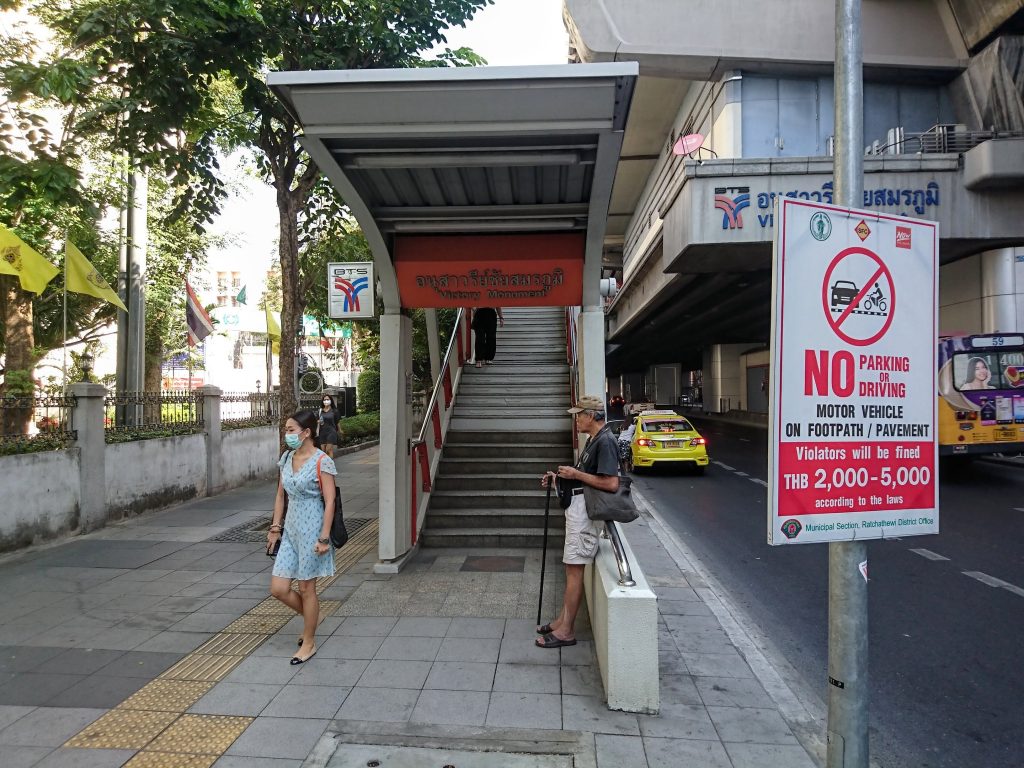
Room for improvements – key recommendations:
Whilst these programmes and interventions are improving the place and people function of streets, as always things could be made better. Key recommendations for how these interventions could be improved and expanded on across SE Asia to particularly improve the pedestrian environment include:
- Expanding space of existing pedestrian only streets and places both permanently and using temporary tactical urbanism schemes – Seoul’s, South Korea’s, road diet campaign forms part of their walking city programme.
- Increasing the frequency and length of time of pedestrian only road closures, for more than just a few hours or one day – Hanoi’s weekend long central pedestrianisation programme is a good example.
- Protect people: use pedestrian friendly and accessible modal filters to reduce vehicle speeds and access – this is especially important for reducing motorbike access.
- Increase the level of monitoring and enforcement of rules with regards to non pedestrian use of footways; with fines for inappropriate use – Bangkok is working to improve this.
- Facilitate the people place function by creating things to do and places for people to meet (both formal seating plus events and allow informal gathering and activities)
- Improving the walking environment along key walking networks to and from residential, transport, educational and commercial hubs – Singapore’s Walk 2 Ride Programme protected and connected walking routes from Housing developments and transport links.
- Create bicycle and motorbike parking hubs at key start and end points of walking routes that still allow for 1.8m effective width of footway.
- Pedestrian crossings need to be protected and priority increased through signals and speed reductions
- Ensure greater compliance from motor-vehicles at pedestrian crossings through education and enforcement to change road user culture.
In summary:
In the future efforts to improve and protect the walking environment of Asian cities will also have to secure space for these informal uses of streets – such as providing dedicated spaces for hawkers, street markets, motorbike and cycle parking, space for communities to use and places for local businesses to use.
Whilst in doing so engagement and participation with all local stakeholders will be key to creating successful walking friendly spaces; but also improved streets that local people support and changes that people want to see.
Published: April 2020




